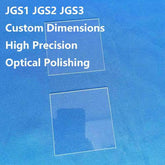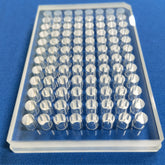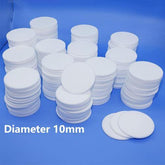What are the main components of quartz glass? Precautions for using quartz glass
Nowadays, with the continuous development of production technology by manufacturers, various new types of glass have emerged, with more and stronger functions, gradually replacing ordinary glass. For example, ordinary glass windows that were originally only able to transmit light and wind, have the function of noise reduction and heat insulation after using laminated glass, which is more convenient and practical. We will briefly introduce the main components of quartz glass in the following text, so that everyone can understand the precautions for using quartz glass.
1、 What are the main components of quartz glass
Quartz glass is made by melting various pure natural quartz (such as crystal, quartz sand, etc.). The expansion coefficient is relatively small, which is 1/10 to 1/20 of that of ordinary glass, and has good heat resistance. It has high heat resistance, with regular usage temperatures ranging from 1100 to 1200 degrees Celsius and short-term usage temperatures up to 1400 degrees Celsius. Quartz glass is mainly used for laboratory equipment and refining equipment for special high-purity products. Due to its high spectral transmittance, it will not be damaged by radiation (other glass will darken after being exposed to radiation), making it an ideal glass for current spectrophotometer optical systems, market spacecraft, and wind tunnel windows.
Quartz glass is a special industrial technology glass with a single component of silica. This kind of glass has a hardness of about Mohs 7. It has high temperature resistance, low expansion coefficient, heat shock resistance, chemical stability, good electrical insulation, and can pass through ultraviolet and infrared rays. Except for hydrofluoric acid and hot phosphoric acid, it has good acid resistance to general acids. Divided into two categories based on transparency: transparent and opaque. According to purity, it can be divided into three categories: high-purity, ordinary, and doped. It is made of crystal, silica and silicide by high-temperature melting or chemical vapor deposition. The melting methods include electric melting, gas melting, etc.
2、 Precautions for using quartz glass
- Quartz glass products are valuable materials that must be handled with care and extreme caution when used;
- All types of quartz glass have an upper limit for use temperature, which should not be exceeded during use, otherwise it will crystallize or soften and deform;
- Quartz glass that needs to be used at high temperatures must be wiped clean before use. It can be soaked in 10% hydrofluoric acid or lotion, and then cleaned with high-purity water or treated with alcohol. When operating, thin wire gloves should be worn and direct contact with quartz glass with hands is not allowed;
- Continuous use of quartz glass products is allowed at high temperatures, which is beneficial for extending the lifespan of quartz glass and improving its temperature resistance. On the contrary, intermittent use of quartz glass products at high temperatures has a limited number of uses;
- Although quartz glass material has high thermal stability, it can withstand severe temperature fluctuations. However, in practical use, due to certain differences in thermal stability, attention should be paid when using;
- Quartz glass is an acidic material that should be strictly avoided from contact with alkaline substances (such as water glass, asbestos, potassium sodium compounds, etc.) when used at high temperatures, otherwise its anti crystallization performance will be greatly reduced.







